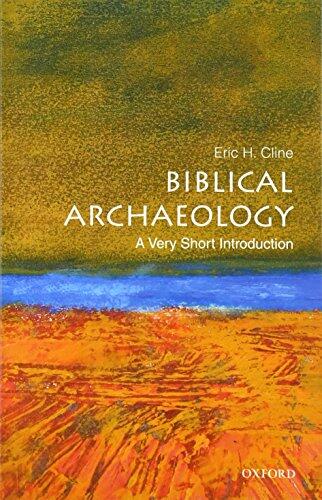
Biblical Archaeology: A Very Short Introduction
No ratings yet
Religion & Spirituality
Science & Technology
History
+1
more
Format
Paperback
Pages
168
Language
English
Published
Sep 28, 2009
Publisher
Oxford University Press
Edition
Illustrated
ISBN-10
0195342631
ISBN-13
9780195342635
Description
Interest in biblical archaeology has surged, capturing the imaginations of many through television documentaries and media portrayals. This book offers an engaging exploration of the fascinating intersection between archaeology and the biblical narrative, unraveling how ancient artifacts illuminate stories from religious texts.
Eric H. Cline delves into the methodologies and discoveries that have emerged from archaeological excavations, showcasing how these findings either corroborate or challenge traditional interpretations of sacred writings. The author presents a vivid account of significant archaeological sites and the thrilling stories behind them, which in turn reveal the daily lives, cultures, and beliefs of historical societies.
As readers journey through the ancient landscapes of the past, they are encouraged to consider the implications of these discoveries and their relevance today. Cline’s concise yet informative style demystifies the field, making it accessible to a wide audience eager to understand how archaeology shapes our comprehension of biblical history.
This concise guide serves not only as an introduction to the discipline but also as an invitation to delve deeper into the fascinating world of biblical archaeology, encouraging readers to reflect on the enduring impact of these findings on contemporary faith and understanding.
Eric H. Cline delves into the methodologies and discoveries that have emerged from archaeological excavations, showcasing how these findings either corroborate or challenge traditional interpretations of sacred writings. The author presents a vivid account of significant archaeological sites and the thrilling stories behind them, which in turn reveal the daily lives, cultures, and beliefs of historical societies.
As readers journey through the ancient landscapes of the past, they are encouraged to consider the implications of these discoveries and their relevance today. Cline’s concise yet informative style demystifies the field, making it accessible to a wide audience eager to understand how archaeology shapes our comprehension of biblical history.
This concise guide serves not only as an introduction to the discipline but also as an invitation to delve deeper into the fascinating world of biblical archaeology, encouraging readers to reflect on the enduring impact of these findings on contemporary faith and understanding.
Reviews
Reading Log
No reading logs found
Start tracking your reading progress to see logs here
Add Your First Reading LogNotes
Transaction Log
No transaction logs found
Start tracking your book transactions to see logs here
Add Your First Transaction Log